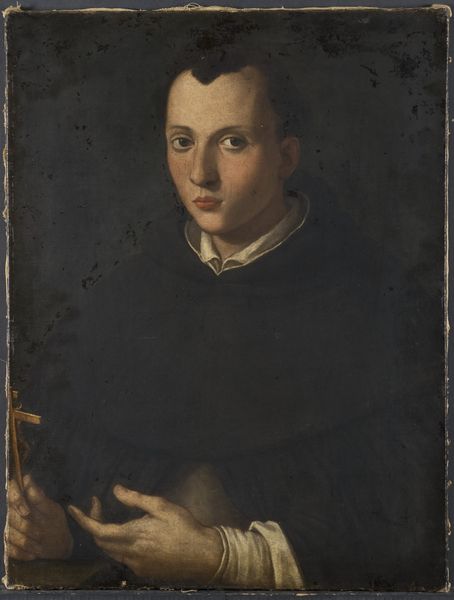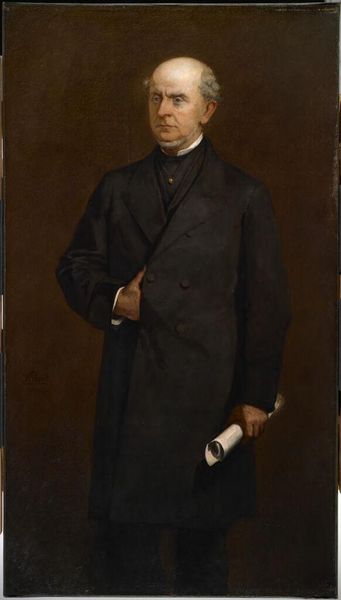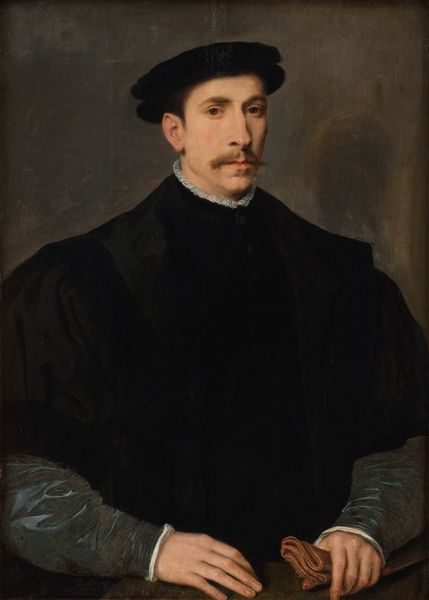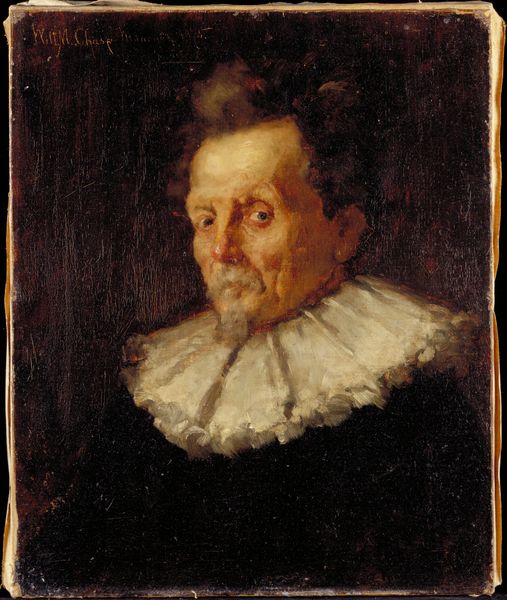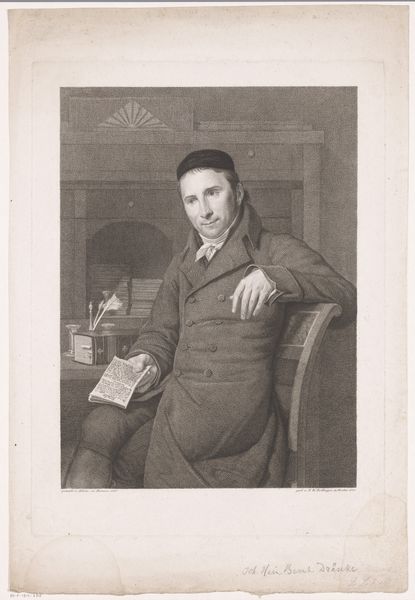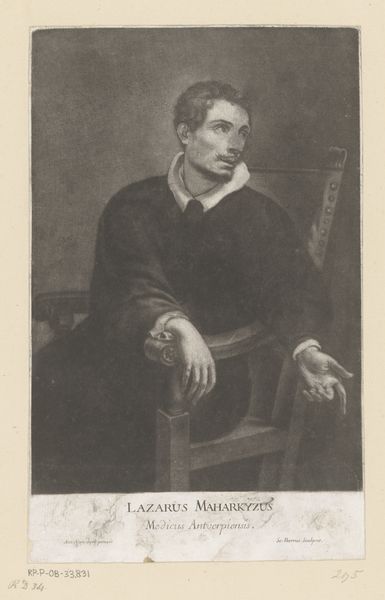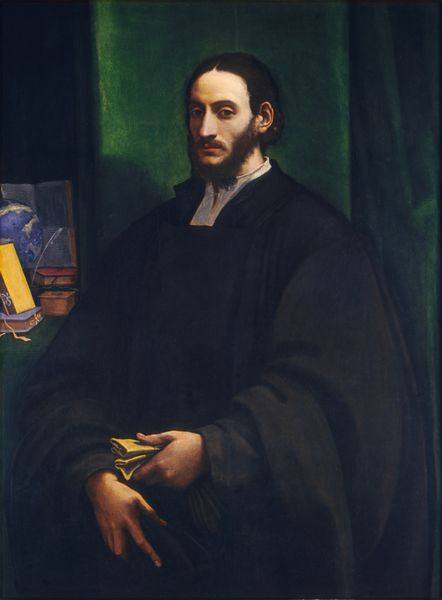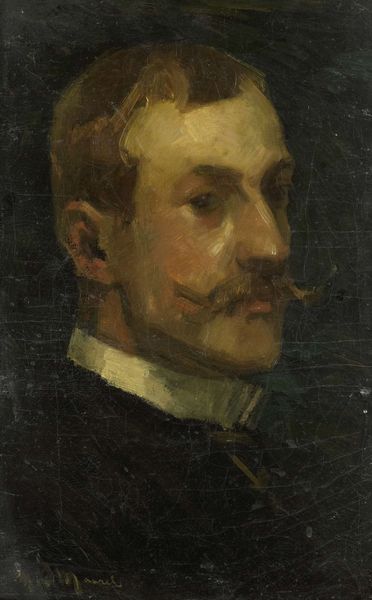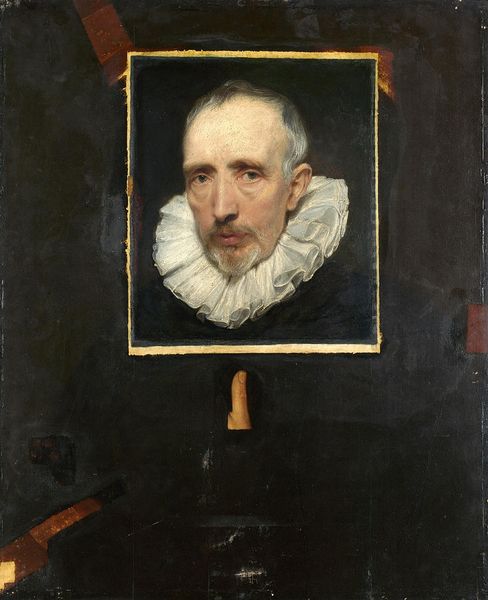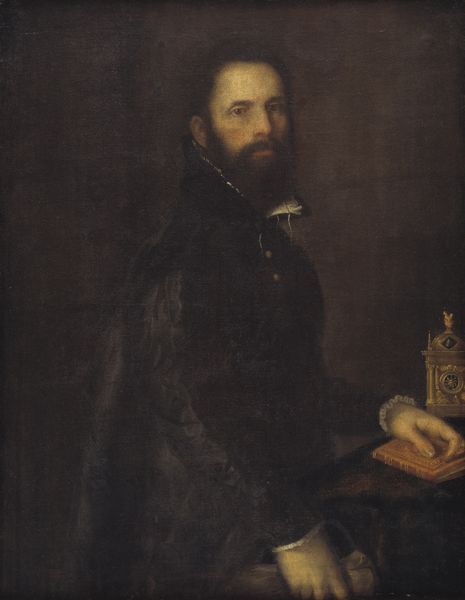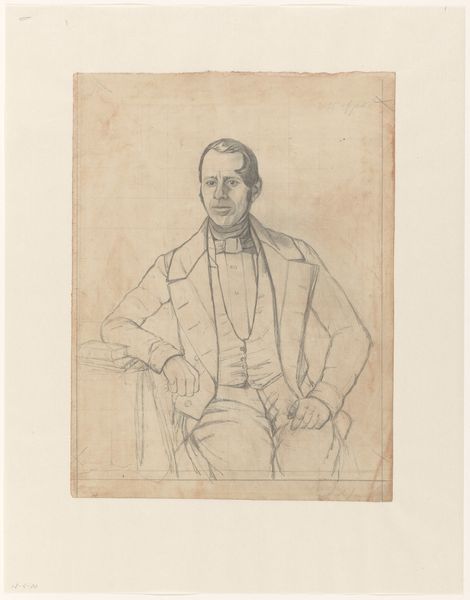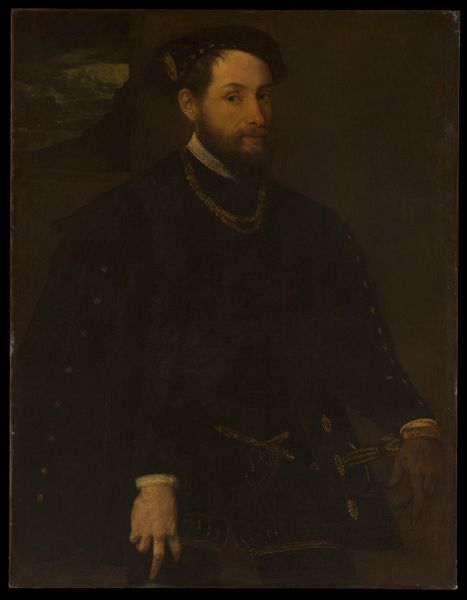
oil-paint
#
portrait
#
oil-paint
#
mannerism
#
figuration
#
history-painting
#
italian-renaissance
#
realism
Dimensions: 70 cm (height) x 58.5 cm (width) (Netto)
Curator: Jacopo da Empoli, also known as Jacopo Chimenti, painted this arresting “Portrait of a Man.” The work, rendered in oil paint, resides here at the SMK, and dates roughly from 1566 to 1640, a period witnessing great shifts in artistic sensibility. Editor: My first impression? Well, if you just glanced, you might think this fellow is a bit drab—all that black! But linger for a second; you'll notice that, even though he might seem constrained, he's also quite sly. Look at the hands—grasped almost protectively, or maybe conspiratorially. I can imagine the man being caught at the middle of something important. Curator: Precisely. Context is paramount. Da Empoli emerges in the late Renaissance and the Mannerist style—a movement pivoting away from the High Renaissance ideals. Considering this, notice the psychological complexity woven into the figure. We cannot extract his representation from the politics of the time. The clothing, seemingly austere, still screams of aristocratic distinction—his neck piece speaks volumes about class. Editor: It really does look like the precursor to some elaborate, restrictive neck brace! I love how the formality is undermined, though. It has those realistic flaws, like in his eyes... gives him a soulful quality! Like he doesn’t quite buy into the system himself. Curator: An excellent observation. Think about this from the viewpoint of the social pressures governing representation at the time. Da Empoli subverts the expected heroic portrait. He portrays not an ideal but a particular individual within precise social structures, opening up debates on status, identity, and personhood that resonate even today. Editor: What a complex portrait! The kind that sticks with you—all because, in the beginning, it appeared pretty normal at first glance. Turns out, those initial thoughts are the best invitations! Curator: Indeed. Through attention to historical, theoretical, and social forces, this portrait transforms into a space where the intersections of art history, philosophy, and identity ignite potent critical dialogues.
Comments
No comments
Be the first to comment and join the conversation on the ultimate creative platform.
